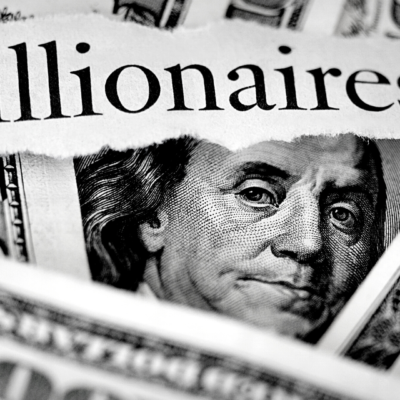How Dwayne Johnson wrestled his brand to success
Everyone knows who Dwayne “The Rock” Johnson is today, but fewer know his story and his gritty past.
Before He Was a Household Name
Before you dismiss his success as just some lucky lottery winner you can’t relate to. You should know that when he started building his path to success years ago. He started his journey with $7 to his name the day after he thought his life was over.
After he failed his dream of nearly getting into the NFL. His stardom comes from an unbelievable story of defying a life of adversity.
His story is legendary and as they say: “Legends aren’t born their made” and Dwayne Johnson certainly made a legendary brand from scratch and there’ s a lot to be learned from his unconventional story.
We talk a lot about building personal brands today. But we don’t honestly do a great job of talking about what REALLY, goes into them.
Before He Was Famous
His is a story of defying the odds, teaching us that building a personal brand is just that. Personal.
Before being named “Peoples’ sexiest man alive”, before he was ranked as the highest-paid actor in Hollywood.
Before he had a hit HBO show and popular YouTube channel with millions of social media followers and endless blockbuster movies. Before hosting SNL not once but 5 times, and long before Johnson teased a run for president, his beginning started from a place of quiet despiration.

Early Days Growing Up
Johnson was a regular kid born in California but grew up in Hawaii.
His father, a former professional wrestler who was let go from the circuit. Out of work, the family was evicted from their 1-bedroom apartment after failing to meet the deadlines for paying rent.
Dwayne was 14 years old. There wasn’t much he could do, but he quickly found solitude in a local gym lifting weights.
Turning Passion into Purpose
Johnson mentioned in his official Facebook page:
“I started training hard at 14 years old. Not for fame or a competition, but because we were evicted from our small apartment in Hawaii. I really hated that feeling of helplessness and never wanted that to happen again. So, I did the only thing I could control with my own two hands in hopes that one day my family would never worry about being evicted again – I trained,”

This experience changed him forever.
It was this moment that carved into Johnson a sense of urgency as a survivor. Forced off the island without a place to live.
The family wound up moving to a little motel outside Nashville, Tennessee where he stole steaks from a local grocery store only to realize that he didn’t have a way to prepare the meat in the motel room.
Unfortunately, that wasn’t all he stole.
Overcoming His Demons
Johnson joined a gang and had been arrested eight or nine times by age 16.
But thankfully the time and energy Johnson was putting into the weight room started paying dividends when he found himself a fatherly figure in football coach named Jodi Swick who gave him a chance to play on the football team.
Dwayne fell in love with competition and chose a more productive path in sports.
He trained and worked hard eventually earning his way play for the University of Miami. His future was starting to look brighter with pro football a possibility. Until a sudden injury cut his dreams into shreds.
Warren Sapp replaced his spot on the roster who ultimately went on to play in the NFL and became famous instead of Johnson. Crushing his dreams and everything he planned for up to that moment.

With Only $7 in His Pocket Left
After graduating Miami with no prospects Johnson went to Canada to play semi-pro for the Calgary Stampeders in 1995 only to be cut from the team after just 2 months.
With no job and a wife to support, Dwayne had $7 to his name and no idea what to do.
He called his father to pick him up and had to move back into his parent’s apartment.
The voice in his head told him. “You’re done. Your life is over. You failed! You’re worthless.”
He later recalled recalled dealing with a bought of depression:
“I found that, with depression, one of the most important things you could realize is that you’re not alone. You’re not the first to go through it; you’re not going to be the last to go through it… I wish I had someone at that time who could just pull me aside and say, ‘Hey, it’s gonna be OK.
It’ll be OK.
I didn’t want to do a thing, I didn’t want to go anywhere. I was crying constantly. Eventually, you reach a point where you are all cried out.”.
He Had a Decision to Make
He spent that time pondering his next moves and if he even had any at all. Dwayne stayed cooped up in his family apartment biding his time simply cleaning.
Then one day his former Calgary coach called him up and asked him if he was interested in coming back.
But he wasn’t. Instead, Johnson turned to something familiar to him.
Watching his father and grandfather wrestle growing up, he decided to attempt a career in their footsteps. Only to receive some discouraging feedback from his family. After hearing his new career choice his father, Rocky, told Dwayne this was the worst mistake he would ever make.
But that didn’t deter Dwayne. And Rocky agreed to train him anyway. Johnson was able to arrange several tryout matches through the then WWF. He had his foot in the door. The professional wrestling journey for Johnson began in that awkward and disparaging beginning.
Making His WWE Debut
His father trained him and just a year after being cut from the Stampeders, Dwayne made his WWE debut in 1996 with the stage name “Rocky Maivia” combining the names of his father and grandfather. Later to be known simply as “The Rock”.
combining the names of his father and grandfather. Later to be known simply as “The Rock”.
And once again, his experience didn’t go as he planned. The audience didn’t take to him or his character and it seemed as though his father was correct. It was all a mistake.
But Dwayne didn’t give up. He kept pushing forward. He made changes in his character and increased his efforts to stand out and personalize his stage presence. He went all-in.
He eventually won the audience over with his magnetic personality and became known as the most electrifying man in sports entertainment.
Dwayne started using his own catchphrases, so much so, that Merriam-Webster Dictionary officially added his “smackdown” phrase to the dictionary in 2007.
Leveling Up
After catching his stride in the ring and with his new and growing fans, the Rock was no longer surviving he was creating momentum.
Rather than being handed obstacles to deal with, he was finally making opportunities for himself.
Unbeknown to Johnson, at that same time, Saturday Night Live wanted to bring a pro wrestler on to host the show.
Because of the charisma he put into the ring, they chose him.
Hosting SNL
In 2000, Saturday Night Live asked the now well-known wrestling celebrity to take center stage and host a show.
It was at this moment that the outside mainstream world became aware of The Rock’s personality and energy. Things changed forever. Lorne Michaels recalled Johnson’s first hosting gig in a NY Times Interview:
“He has a wonderful sense of timing, he has an innate theatricality and because he projects strength, the audience kind of relaxes with him. He could do nuance, he could do subtle, he could do big and broad.”
Johnson stepped up to the plate in a big way.
He took the flame of success he created and added fuel to the fire. He decided to launch a book, a memoir for his life until that moment.

Building His Brand
The story of his life became number 1 on the New York Times Best Seller list. Another win that created more awareness and opened even more doors for him.
It was only five years after Johnson had started wrestling, and was thrown very quickly into the world of Hollywood films.
He adapted quickly. Bringing the charm he created in the ring to the studio. But he didn’t just hone his acting capability, he elevated his personal brand and marketing skills as well.
Johnson started changing the way movies were promoted.
Sharing set secrets and behind the scenes shots before a movie premiere used to be taboo. But the Rock turned the game upside down when he inked a deal to get paid an extra $1 million to promote his own movies due to the power to promote his project to his now enormous social followers.
That’s pretty badass.

And He isn’t Slowing Down
Dwayne currently has over
- 100 million Instagram followers
- 58.1 million Facebook followers
- 13.9 million Twitter followers
- over 2 million YouTube subscribers
Across all those channels he shares photos, videos, and announcements about the films he’s in as he’s working on them.
Johnson’s posts, featuring things like set photos with fans on set, often create organic media placements.
Creating even more coverage for the films he stars in, and it cost him nothing.
Conclusion
He not only stepped into Hollywood as a player, he quickly learned how to play the game and changed it.
Through his years of talented brand building. He adapted and capitalized by being the most entertaining player in his space.
At the beginning of Dwayne Johnson’s journey, it would be difficult to predict the success he would manifest if any at all. Through his perseverance and determination not to quit and race towards new opportunities, today Dwayne Johnson’s net worth is north of $320 million and climbing.
He’s a 100% certified self-made-man, an inspiration to millions, and the hardest worker in the room. But best of all, through his success, he remained as humble as the man that began the journey.
Threw his story, his actions, and his positive influence, he became a man worth following.
“Be the type of person that when your feet touch the floor in the morning the Devil says, “aww shit…there up.”
– Dwayne Johnson
For more information visit tylerhayzlett.com
















